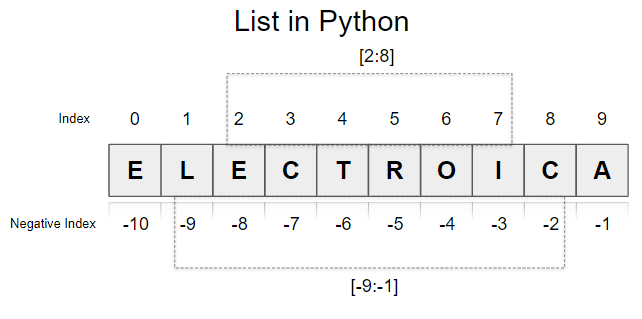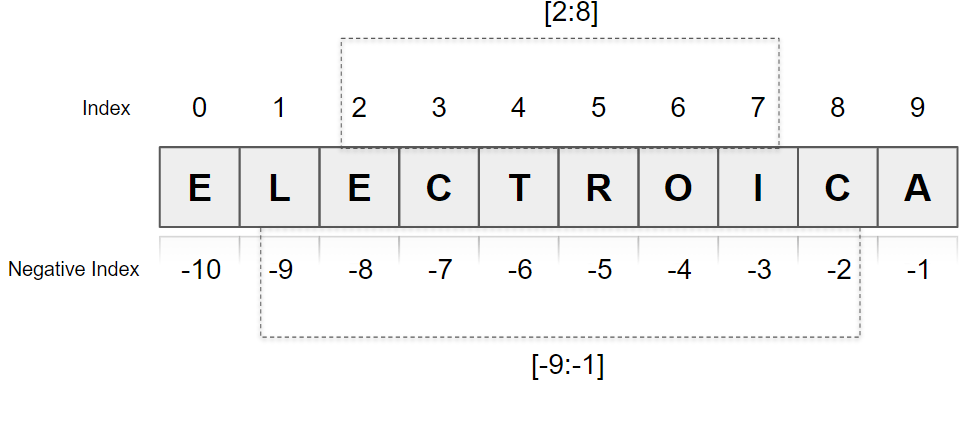All about List Data type in Python

Lists data type is python is similar to arrays in many other programming languages.
Lists are mutable sequences used to store items of the different or same data types.
- Properties of list data type
- How-to-Create-a-list-in-python
- 5 ways to create a list
- Accessing-items-of-a-list
- Changing item value in a list
- Add item in a list
- Delete-items-of-a-list
- Get length of the list
- Sort values in a list
- More useful methods of list
Properties of list data type
- is Ordered
- Is Mutable
- Can be Homogenous or heterogenous
- Can be used as stack
- Can be used as Queue
- Can be Nested
How to Create a list in python?
In pyhton lists can be made in 4 different ways.

- Using a square bracket : [ ]
- Separating items with a comma in a square bracket. [ 1, 2, 3, “a”, “b” ]
- Using list comprehension. [ x for x in iterable ]
- Using type constructor: list() or list( iterable )
5 ways to create a list.
#ways to create list in python
#create a empty list
list_empty=[]
#create a list with item 1,15,c
list_withitems=[1,15,"c"]
# craete a list with items 1,2,3,4----,9
list_comprehention=[x for x in range(1,10)]
#crate a empty list
list_typeconst=list()
#creates a list with items 1,2,3,----,9
list_typeconst_iterable= list(range(1,10))Accessing items of a list
Each item in a list can be accessed by its index value.
#create a list with items
list_withitems=[1,15,"c"]
#access item in the list
first_item=list_withitems[0]
#access last item in the list
last_item= list_withitems[-1]
#print the first item
print(first_item)
#print the last item
print(last_item)With index values python offers different techniques to manipulate and access the items of list.

- Negative Indexing– To access elements from the last of the list.
- eg.- list_items[-2] will return the 2nd last item of the list.
- Slicing – To access a limited range of items.
- list_items[1:10] – list of items from index 2 to index 9
- list_items[ :5 ] – list of items from index 0 to index 4
- list_items[-5: ] -list of items from 5th item from last to last item
Changing item value in a list
Since each element of a list can be changed by using the ‘=’ operator.
Eg. list_items[1]=10 will change the value of item at index 1 to ’10’
list_items[1]=10 Add item in a list
To add elements in a python list “append()” or ” extend()” can be used .
- append(item) will add item/ items at the end of the list.
- extend(iterable) will append values returned by the iterable.
list_items.append(2)
list_items.extend(range(1,10))Delete items of a list
del statement removes a value from the list given the index.
del list_items[index] removes item at specified index .
#remove item at index 3 of a list
del list_item[3]
#remove slice from a list
del list_item[2:6] Get length of the list
len() function returns the number of items in a list
#get count of total items in a list
len(list_items)
Sort values in a list
sort() method sorts the values in ascending or descending order.
#sort the list in ascending order
list_items.sort()
#sort the list in descending order
list_items.sort(reverse=true)Note.: sort only works when the list is homogeneous.
More useful methods of list
| Method | Usage |
| append(item) | add item at the end of the list |
| extend(iterable) | add item from an iterable to end of list |
| insert(i,x) | before index ‘i’ add item ‘x’ |
| remove(x) | remove item from list whose value is x |
| pop() | removes last item from the list |
| clear() | remove all items of the list |
| index(x) | returns index at which value is equal to x |
| count(x) | counts number of times x appears in the list |
| sort() | sorts the list |
| reverse() | reverse elements of the list |



